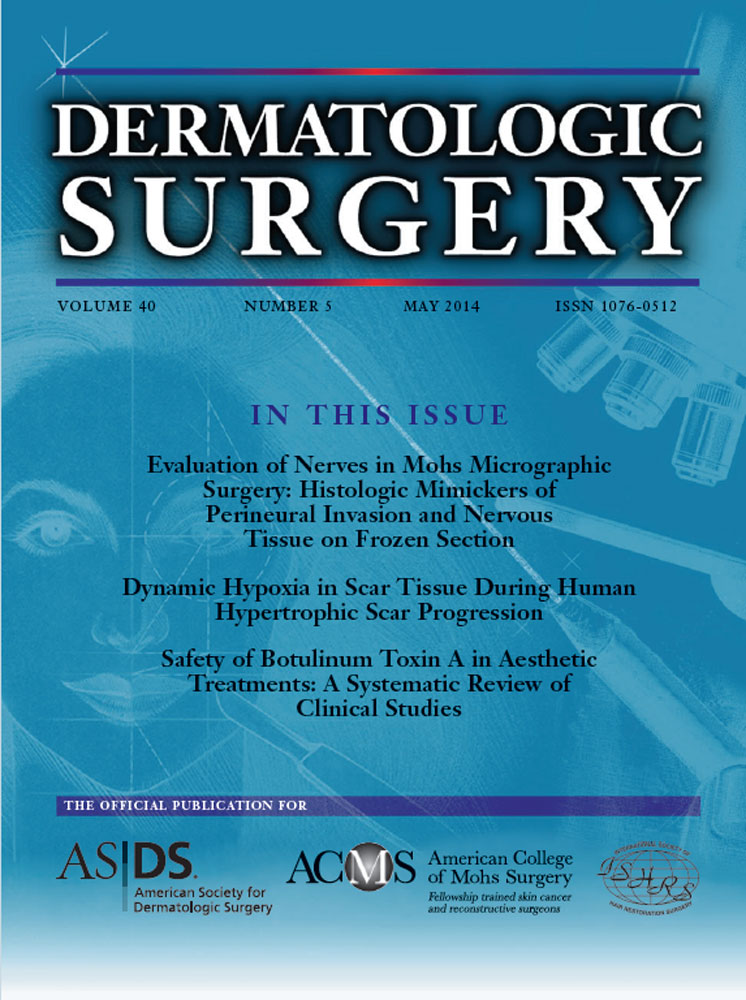Cell Surface Molecules in Basal Cell Carcinomas
Abstract
background The factors determining a basal cell carcinoma's (BCC's) growth pattern and invasive potential are not known. In other tumors it has been shown recently that the expression of cellular adhesion molecules may determine a tumor's invasive and metastatic potential. Integrins, cell surface molecules important in cell stroma interactions, are present on BCCs and may help regulate the tumor's growth pattern.
objective We compared the expression of cellular adhesion molecules α2 integrin, β1 integrin, intercellular adhesion molecule 1 (ICAM-1), vascular cell adhesion molecule 1 (VCAM-1), leukocyte function antigen la (LFA-1a), and E-selectin in different histological subtypes of basal cell carcinomas. methods. BCCs were obtained from patients undergoing Mohs surgery. The BCCs were classified as nodular, micronodular, mixed, infiltrative, and basosquamous types and stained using an avidin-biotin-immunoperoxidase technique with antibodies against α2 integrin, β1 integrin, ICAM, LFA-1a, VCAM-1, and E-selectin.
results BCCs expressed α2 and β1 integrin, but no significant differences in the amount or pattern of expression was seen in the different histologic subtypes.
conclusion The expression of integrins by BCCs by binding to the surrounding stroma may limit BCC's groiuth; however, their expression does not appear to correlate with their histological pattern.




